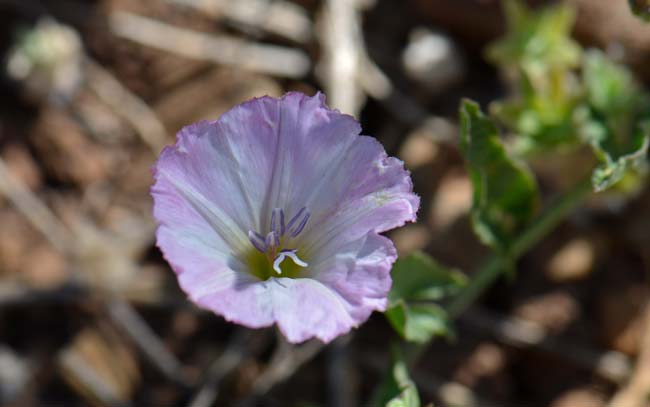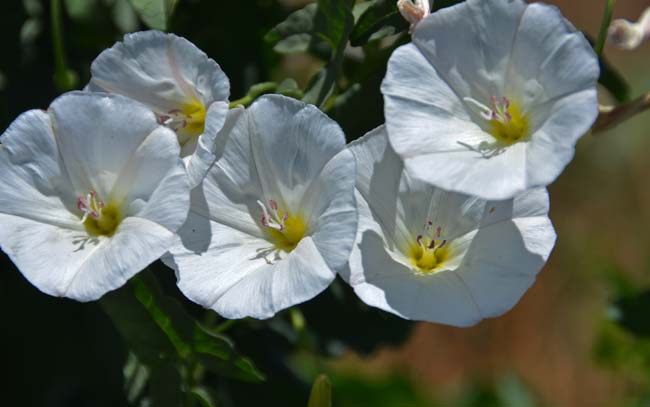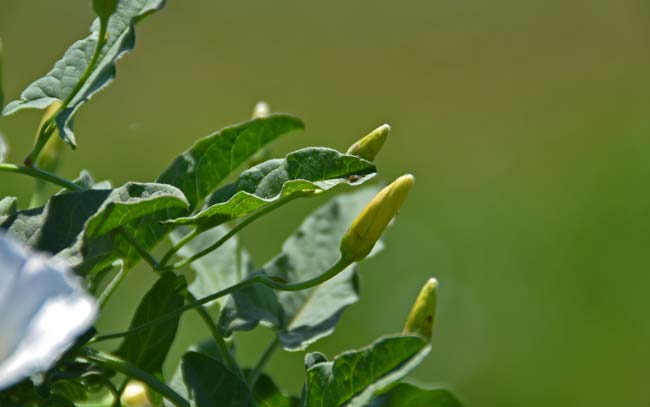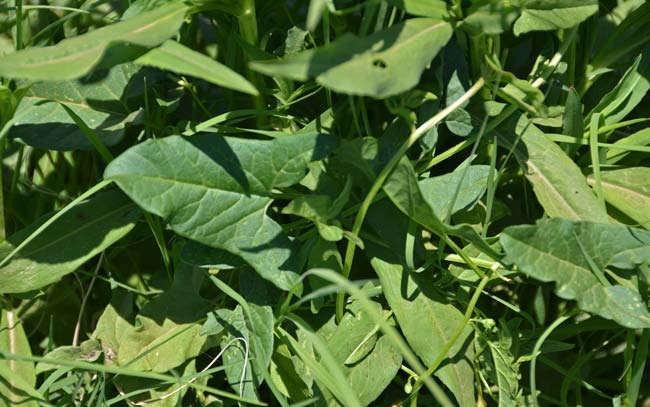Convolvulus arvensis, Field Bindweed




Scientific Name: Convolvulus arvensis
Common Name: Field Bindweed
Also Called: Creeping Jenny, Devil's Guts, European Bindweed, Morning Glory, Morningglory, Perennial Morningglory, Smallflowered; (Spanish: Correhuela)
Family: Convolvulaceae, Morning Glory Family
Synonyms: (Convolvulus ambigens, Convolvulus incanus, Strophocaulos arvensis)
Status: Introduced
Duration: Annual or perennial.
Size: 1 to 3 feet high or more, forming mats up to 5 feet or more.
Growth Form: Forb/herb; vine; slender, twining, spreading, trailing or creeping, climbs structures and other plants, forms dense thickets, typically glabrous or very small hairs,.
Leaves: Green; variable, heart shaped (cordate), triangular or deltoid, hastate or sagittate, petioles, margins also variable entire or undulate, long petioles, usually without hairs (glabrous).
Flower Color: White, purple or pinkish; showy, ½ to 1 inch trumpet or funnel-shaped corolla, corolla with distinct folds, darker pink stripes, inflorescence 1 or more flowers clustered on tips of short peduncles, each flower on short pedicel, fruit a capsule containing 2 seeds.
Flowering Season: May to July, later in California (May to October).
Elevation: Below 4,500 feet.
Habitat Preferences: Roadsides, fields, irrigated areas and disturbed areas.
Recorded Range: Field Bindweed in an invasive species found throughout the United States and Canada. It occurs over most of Arizona.
North America & US County Distribution Map for Convolvulus arvensis.
U.S. Weed Information: Convolvulus arvensis is listed
in state noxious weed lists for 46 states. State agriculture or natural resource departments; and in: Weeds of Kentucky and adjacent states: a field guide, Weeds of the Northeast, Weeds of Nebraska and the Great Plains, Weeds of the United States and Canada, and Weeds of the West. Plants included here may become weedy or invasive.
Invasive/Noxious Weed Information: Convolvulus arvensis is listed as a Noxious Weed by 22 states including Arizona. Plants included here are invasive or noxious.
Wetland Indicator: No information available.
Threatened/Endangered Information: No information available.
Convolvulus arvensis var. arvensis, with broader leaves and
Convolvulus arvensis var. linearifolius with narrower leaves.
Comments: Field Bindweed is a common invasive and noxious weed native to Europe and Asia. At one time California considered this weed as the worst weed in the state. In Arizona it is most troublesome in irrigated areas forming dense mats and crowding out desirable species. Seeds of Field Bindweed are readily eaten by birds.
Also see in Southwest Desert Flora; Texas Bindweed, Convolvulus equitans.
See ethno-botanical uses at Native American Ethnobotany, University of Michigan, Dearborn.

